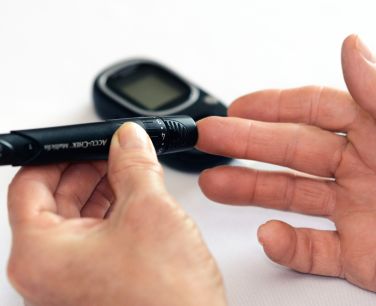Diabetes affects 463 million adults worldwide and a further 1.1 million children and adolescents under the age of 20 live with Type 1 diabetes. In Hong Kong, about 10% of the population (approximately 700,000 people) suffer from diabetes and on average an additional seven children per month are diagnosed with diabetes.
There is still no cure for this lifelong disease.
- Diabetes is a chronic disease that is caused by the body either not producing any insulin at all, or not enough insulin and the body cannot effectively use the insulin it produces. Insulin is a hormone that regulates blood sugar (glucose)
- Having too much blood glucose in the body over a long period of time can lead to serious damage to many of the body’s systems, especially the nerves and blood vessels, causing life-threatening complications such as heart disease, blindness from retinopathy, and nerve damage
- The most common types of diabetes are Type 1, Type 2, and gestational diabetes
About Type 1 diabetes

- Type 1 diabetes is a life-long autoimmune condition where the body produces no insulin, and if left untreated could lead to life-threatening complications and death. There is currently no cure; however, with good ongoing management and support, a child with diabetes can still live a full and healthy life.
- Type 1 diabetes cannot be prevented and isn’t caused by poor diet or an unhealthy lifestyle.
- Although Type 1 is commonly diagnosed in childhood, it can actually be diagnosed at any age.
- Type 1 diabetes requires constant management: 24 hours a day, 7 days a week for the whole life span. Most children will need to do multiple finger-prick blood tests and a minimum of 4 insulin injections a day just to stay alive.
- In one year, a child with Type 1 diabetes will need to have an average of 2,920 finger-pricks test and 1,460 insulin injections.
About Type 2 diabetes

- Type 2 diabetes develops when the body either does not make enough insulin to meet the body’s needs, or the insulin produced does not function properly. This is known as “insulin resistance” .
- Type 2 is often linked to lifestyle choices, being inactive, or having a family history of Type 2. The following risk factors increase the chances of developing Type 2 diabetes:
• increase in age
• obesity
• physical inactivity - In many cases, adopting a healthier and active lifestyle can control Type 2 diabetes; however if that is not possible, insulin, by tablet or injected form, is required.
- Type 2 is normally diagnosed in older adults, but diagnosis is on the rise in children. It is important to keep weight under control especially for children with Type 2 diabetes
100 Years of Insulin
This year also marks 100 years since insulin was discovered. Without insulin, millions of people with diabetes would not have survived and thrived. It is thanks to the research conducted by Frederick G Banting and Charles H Best in 1921 and the subsequent innovations in diabetes care that has saved, and improved the lives of millions living with diabetes. You can read more about it on the IDF website.





